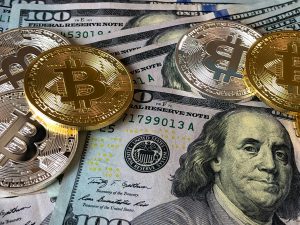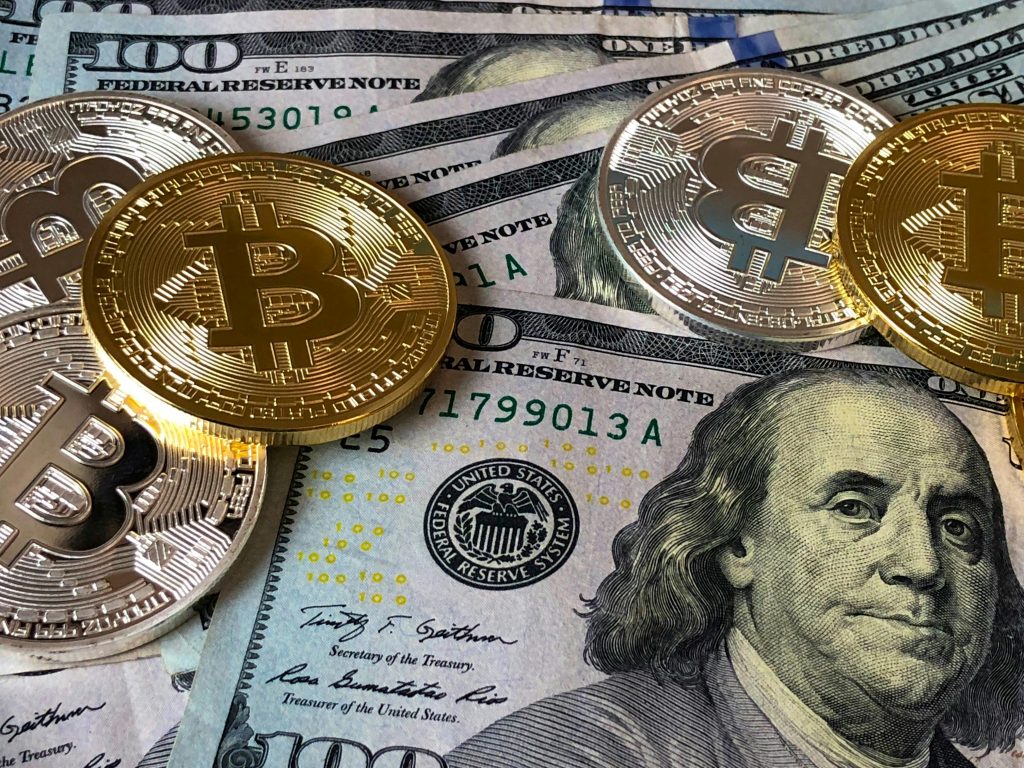Often confused, monetary and fiscal policies are the key drivers of the financial markets — starting with Forex and rippling into stock and commodity markets.
While both provide the framework for businesses to operate, they use different methods to regulate economic activity. Understanding these differences is crucial for traders, helping them better analyse the impact of fiscal and monetary policies on the financial markets.
This article examines the duality between monetary and fiscal policies and their impact on the financial markets. Let’s take a deep dive!
Monetary vs fiscal policy — defining the terms
Monetary policy covers central banks’ actions and decisions that affect the amount of money being printed and, implicitly, the cost of loans/credit in an economy. In contrast, fiscal policy is related to government-set rules on taxation and public spending to regulate the business environment.
Monetary and fiscal policy measures are typically employed concurrently to either stimulate or moderate growth to prevent the economy from reaching a standstill or overheating.1 Eventually, it all boils down to inflation control, money supply and interest rates.
Understanding the mechanisms of inflation, interest rates & money supply
To ensure economic stability, central banks set inflation targets by adjusting the money supply through regular buying and selling of securities in the open market. These actions influence short-term interest rates, which further impact longer-term interest rates and the economy.2
When central banks drop interest rates, they ease their monetary policy, adopting a “dovish” stance. This stimulates consumer spending, investment, and overall business activity by making borrowing cheaper. Let us look at a real-world example.
On 6 June 2024, the European Central Bank (ECB) trimmed interest rates by 25 basis points for the first time since 2019, which weakened the Euro against the USD and a basket of other major currencies.
By comparison, when central banks raise interest rates, they adopt a “hawkish” stance, which is broadly positive for the currency. Let us examine the following example for more clarity.
In July 2022, the ECB increased interest rates by 50 basis points to bring inflation closer to its 2% target,4 which strengthened the Euro against its USD counterparts and other major currencies.
Now let us look at how these mechanisms work together to stimulate economic growth.
Quantitative easing vs quantitative tightening
To manage liquidity, central banks use some unconventional monetary policy tools — quantitative easing (QE) and quantitative tightening (QT).
QE is the method whereby central banks expand their balance sheets by purchasing securities, including corporate and government bonds to infuse capital into the economy. While it can stimulate growth, QE can also hurt the currency, causing it to depreciate due to the increased money supply.
In contrast, QT is the method whereby central banks reduce their balance sheets by selling securities on the open market or allowing them to reach maturity without replacing them. This results in higher interest rates and a stronger national currency.
An illustrative example of QT is the Federal Reserve’s action to balance monetary policy after the financial crisis of 2008, which resulted in a stronger USD as liquidity declined and interest rates climbed.
Bond issuing and repurchase
To control currency strength, central banks also employ bond buying and repurchase programmes. Used in parallel with QE and QT, these methods help combat excess liquidity — by increasing demand for national currency through bond issuing — or increase liquidity — through bond purchase and repurchase programmes.
Let’s take a look at a practical example. To refuel the economy during the COVID-19 pandemic, the Bank of England (BoE) launched its bond repurchase programmes. The immediate effect? A weaker GBP and greater money supply.
In 2015, the ECB launched its famous Asset Purchase Programme (APP)5, injecting billions of Euros into the economy, boosting consumer confidence, yet pressuring the single currency.
Fiscal policy and its implications
As explained earlier, fiscal and monetary policies work in tandem to regulate business and ensure stability.
So far, we’ve highlighted how governments and central banks’ actions influence the economy and control inflation and currency strength. Let us now delve deeper into how government actions regarding taxation and public spending (covered by the fiscal policy) affect the economy as a whole.
Depending on the domestic economic environment, governments may exercise either an expansionary or a contractionary fiscal policy. An example of an expansionary fiscal policy is the US government’s stimulus packages during the COVID-19 pandemic. Through these packages, the US government increased public spending and stimulated borrowing by lowering loan costs.
Additional measures included unemployment benefits, welfare services, extended healthcare insurance, and others. All these measures provided immediate benefits, boosting consumer confidence and, intrinsically, consumer spending. However, despite the advantages, they also raised concerns about inflation, mirrored by the USD’s erratic performance during that period.
Contrastingly, a contractionary fiscal policy is characterised by reduced government spending and increased taxation to prevent the economy from overheating. This tactic helps boost the currency’s strength while reducing inflationary pressures. On the flip side, it can also decelerate economic growth.
In 2010, Germany took a series of austerity measures to reduce public spending in the wake of the Eurozone’s economic crisis. Although these measures strengthened the Euro, they also slackened growth through increased taxes and reduced government spending.
The impact of monetary and fiscal policies on the economy and financial markets
As illustrated so far, the effect of monetary and fiscal policy measures on the economy is significant, as they outline the path forward towards growth and stability. Monetary and fiscal policies have a similar impact on the financial market dynamics and understanding how the markets react to policy shifts is crucial.
Impact on the Forex market
Rising or dropping interest rates, QE/QT and the amount of government spending directly influence currency movements as traders price in anticipated shockwaves.
Impact on bond markets
The connection between bonds and monetary and fiscal policy changes is clear. Interest rate decisions are directly reflected in bond yields which define currency strength. Increasing bond yields attract foreign investment, resulting in currency appreciation. Fiscal policies have a similar effect on bond yields, reverberating through currency price movements.
Impact on stock markets
There is a direct correlation between stock market performance and currency strength. A strong currency negatively impacts export-focused companies, sending their stock prices tumbling. Contrastingly, a weaker currency stimulates exports and boosts corporate earnings, sending stock prices up. Therefore, traders must consider fiscal and monetary and fiscal policy decisions when assessing stock market performance.
Impact on commodity markets
Ultimately, monetary and fiscal policy decisions also echo through commodity price movements. Typically, a weaker currency is inversely correlated with higher commodity prices and vice-versa. However, this theory may not always hold true.
Let’s take another leap back in time, during the 2008–2009 financial crisis, to be more precise. That was a testing moment for gold as a safe haven. Instead of climbing as the USD weakened, the yellow metal followed broadly the same price pattern as the dollar.
Such behaviour was caused by investors liquidating their positions to fund their USD-denominated debts (including gold), following the collapse of Lehman Brothers Bank.6 With this in mind, traders must exercise caution when tallying the relationship between commodity prices and currency strength.
In summary
To conclude, grasping the complex relationship between monetary and fiscal policies and the way financial markets respond to policy shifts is vital in trading, informing traders’ decisions.
Monetary and fiscal policy measures dictate currency valuation and the direction of the economy. Therefore, traders must stay up-to-date with the latest economic events and financial market trends to navigate the complexities of online trading.
TibiGlobe offers a comprehensive array of learning materials, tools and insights to help traders of all levels on their journey. Check out the TibiGlobe for regular updates and follow us on social media to make sure you never miss our news.
References
- CFA Institute (2023). 2023 Curriculum. CFA Program Level I. Economics. Refresher Reading, Monetary and Fiscal Policy. Introduction.
- International Monetary Fund. Monetary Policy and Central Banking
- IronFX Research Team (2024). Market Analysis, ECB Interest rate decision today
- ECB (2022). Our monetary policy statement at a glance — July 2022. ECB Blog
- ECB (2023). Speech by Isabel Schnabel, Member of the Executive Board of the ECB, at the Money Market Contact Group meeting. ECB Blog
- Egan M. (2008). Lehman Brothers: When the financial crisis spun out of control. CNN Business, published 11:32 AM EDT, Sun September 30, 2018
This Article was originally published on TibiGlobe’s Medium Page.








